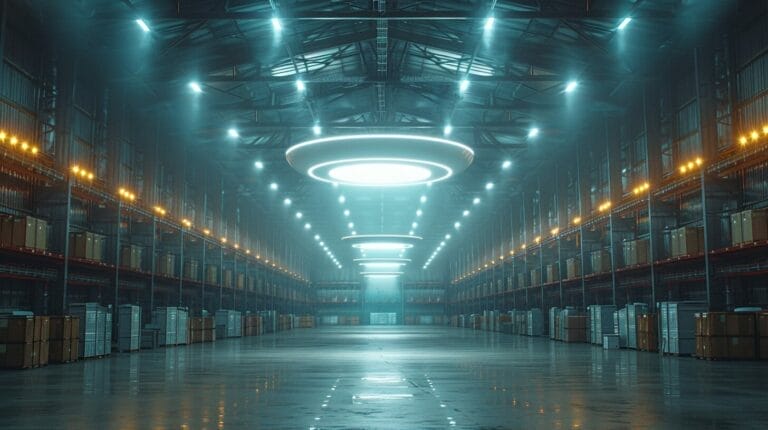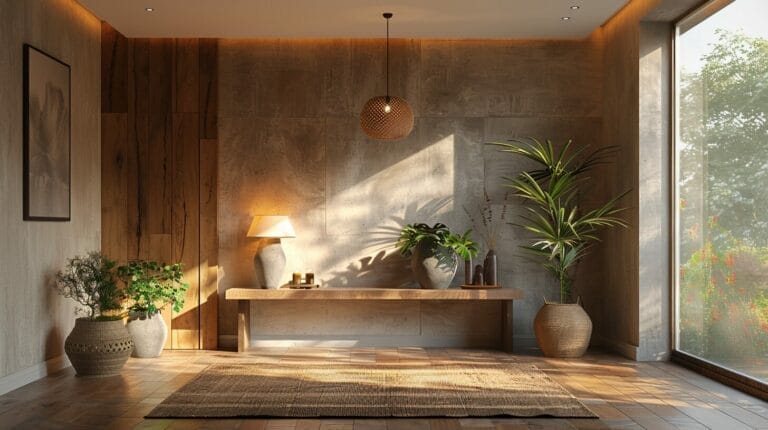How Long Can You Leave LED Lights On? Illuminate Wisely
When we think about leaving LED lights on, we often weigh their energy efficiency against potential impacts on our well-being. LED lights, known for their low heat emission and long lifespan, seem like a practical choice for continuous use. However, the blue light they emit can disrupt our sleep if used improperly. So, how do we find a balance that promotes both energy conservation and a healthy living environment?
Let’s explore some strategies and considerations that can help us make the most informed decisions about our lighting habits.
Key Takeaways
- LED lights can safely be left on for extended periods due to minimal heat production.
- They are energy-efficient, using up to 75% less energy than incandescent bulbs.
- Using LEDs with adjustable color temperatures can reduce sleep disruption.
- Dimmable LED lights can help maintain sleep patterns when left on overnight.
- Motion sensors and smart technology can optimize energy use by automating lighting.
Understanding the Science Behind LED Lights and Their Energy Efficiency

LED lights, otherwise known as Light Emitting Diodes, operate by passing an electrical current through a semiconductor to produce light efficiently. This revolutionary technology drastically reduces energy consumption compared to traditional incandescent light bulbs.
By converting most of the electricity into light rather than heat, LED lights achieve unparalleled efficiency. This means they consume significantly less energy, which directly impacts our electricity bill. Imagine cutting down on energy costs while enjoying the same, or even better, illumination. That’s the power of LED lights.
LED lights use up to 75% less energy than incandescent bulbs, translating to substantial savings over time. The science behind this involves the diode’s ability to emit light when an electrical current passes through it, minimizing wasted energy. It’s this very mechanism that allows us to leave LED strip lights on for longer durations without worrying about skyrocketing electricity bills.
By embracing LED technology, we make a conscious choice to reduce our energy consumption. This demonstrates that innovation and sustainability can indeed go hand in hand.
The Safe Duration of Leaving LED Lights On: What You Need to Know

Given the impressive energy efficiency of Light Emitting Diodes, it’s worth exploring how long we can safely leave our LED lights on without any negative repercussions. Typically, LED lights are designed to run for extended periods without any issues.
One of the key benefits of LEDs is their ability to produce minimal heat. Unlike incandescent bulbs that waste a large amount of energy as heat, LEDs remain cool to the touch, reducing the risk of overheating and making them safer for continuous use.
However, we should also consider the potential impact on our sleep. Blue light emitted by some LED lights can interfere with our circadian rhythm, making it harder to fall asleep. For those of us who value innovation and efficiency, choosing LED lights with adjustable color temperatures can help mitigate this effect.
In essence, we can leave our LED lights on for as long as needed, provided we’re mindful of their light spectrum and its potential effects on sleep. This balance allows us to embrace the benefits of LED technology without compromising our well-being.
The Practical Aspects of Leaving LED Lights On Overnight

When considering leaving our lights on overnight, we must weigh the potential risks and benefits. LED bulbs, known for their efficiency, emit less heat and are less likely to overheat compared to traditional bulbs. This makes them a safer option for those who need to keep strip lights on all night.
However, we should also think about the impact on our health. LED lights can interfere with melatonin production, which affects our sleep cycles. Using dimmable LED bulbs or those with warmer color temperatures can mitigate this issue, helping us maintain healthier sleep patterns.
To provide a clear picture, let’s examine the practical aspects in a simple table:
| Aspect | Potential Risks | Benefits |
|---|---|---|
| Heat Emission | Minimal risk of overheating | Safe to leave on overnight |
| Health Impact | May disrupt melatonin production | Dimmable options available |
| Safety Precautions | Confirm proper installation | Reduced fire risk |
Energy and Money Saving Advantages of LED Lighting

Switching to LED lighting can greatly reduce our energy bills over time. LED lights are incredibly energy efficient, consuming up to 80% less power than traditional incandescent bulbs.
Beyond just saving money, LED lighting offers substantial environmental benefits. Since LEDs use less electricity, they reduce our overall carbon footprint. They also last much longer than traditional bulbs, which means fewer replacements and less waste.
For those of us keen on embracing forward-thinking, sustainable solutions, LED lighting is a clear winner. By making the switch now, we not only enjoy immediate financial savings but also contribute to a greener planet, securing a brighter future for everyone.
Making an Informed Choice: When to Leave LED Lights On

Balancing our lighting needs with energy efficiency means strategically deciding when to leave LED lights on.
During high-activity periods, such as cooking, studying, or working, keeping LED lights on ensures ample brightness, enhancing productivity and safety. Conversely, in low-traffic areas or during periods of inactivity, we should turn off LED lights to conserve energy. Utilizing smart technology, such as motion sensors or timers, can automate this process, ensuring that lights are only on when needed.
Outdoor LED lights can also be programmed to illuminate pathways and entryways during the evening, providing security while optimizing energy use.
Conclusion
To sum up, let’s be wise about using LED lights. By understanding their energy efficiency and managing their impact on our well-being, we can make better lighting choices.
Opting for dimmable or warmer LEDs, strategically illuminating key areas, and leveraging smart technology will help us strike the right balance. Together, we can conserve energy, save money, and create ideal lighting conditions for our daily lives.
Let’s illuminate wisely and enjoy the benefits of LED lighting.
Frequently Asked Questions
How long can you leave LED lights on?
LED lights can be left on for extended periods of time without any issues. They are designed to last around 8 years of continuous operation.
Is it safe to leave LED light strips on all night?
Yes, it is safe to leave LED light strips on all night. They are durable, produce less heat, and use less power compared to traditional light bulbs, making them a safe and energy-efficient option.
Do LED lights impact your sleep?
LED lights generate little heat and have a minimal impact on your sleep, making them suitable for use even in bedrooms.
How do LED lights save money in the long run?
LED lights use less power, last longer, and have lower replacement costs compared to traditional incandescent or fluorescent bulbs. This results in saving money on electricity bills and maintenance expenses in the long term.
Should you replace traditional light bulbs with LED light strips?
It is recommended to replace traditional light bulbs with LED light strips as they are more energy-efficient, durable, and cost-effective in the long run.






